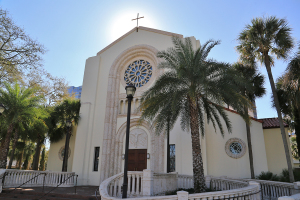A Primal Thought: The Island of the Colorblind
In the Island of the Colorblind, Oliver Sacks writes a colorful account about a tiny island in the South Pacific. Pingelap is less than three square miles, and the highest elevation on the island is only ten feet above sea level. In 1775, Typhoon Lengkieki swept over the island destroying all of the vegetation and killing 90 percent of the inhabitants. The twenty survivors resorted to fishing as the only means of survival until the island revegetated.
After the great typhoon, a genetic peculiarity evolved. A surprisingly large proportion of the next generation was born colorblind. Elsewhere in the world, less than one in thirty thousand people are colorblind. On the island of Pingelap, one in twelve is born with the condition. The high percentage can be traced to the fact that several people in the surviving gene pool carried a rare gene responsible for congenital achromatopsia.
Those of us with normal color vision have approximately 7 million cones, allowing us to distinguish up to 10 million different colors. Congenital achromatopes have no functional cones. They rely exclusively on the 120 million low-light photoreceptor rods in the retina. As a result, they are hypersensitive to light. They often wear several pairs of sunglasses or avoid light altogether. Their poor visual acuity forces them to use a monocle-a handheld magnifying glass that looks like a telescope-to read text or see things from a distance. And, of course, they cannot perceive color.
The sad irony is that few places on earth are more beautiful or colorful than this tropical paradise. "It was striking how green everything was in Pingelap," notes Oliver Sacks, "not only the foliage of trees, but their fruits as well-breadfruit and pandanus are both green, as were many varieties of bananas on the island." The island is full of "brightly colored red and yellow fruits-papaya, mango, guava." The island is literally bursting with tropical colors, but the colorblind Pingelapians cannot perceive it. They lack the perceptual capacity simply because they have no cones.
Sad, isn't it? But many of us are as blind to wonder as the Pingelapians are to color. There are miracles all around us all the time, but we lack the perceptual capacity to perceive them. We are in the presence of God, but we are unaware of it. We are surrounded by the glory of God, but can't see it.
Elizabeth Barrett Browning put it in poetic terms.
Earth's crammed with heaven,
And every common bush afire with God;
But only he who sees takes off his shoes;
The rest sit round it and pluck blackberries.
Adapted from Mark Batterson's new book, Primal: A Quest for the Lost Soul of Christianity, released by Multnomah Publishers. To download a sample chapter, visit www.theprimalmovement.com.




























